
Uluru: The Majestic Heart of Australia
Experience the breathtaking beauty and rich cultural heritage of Uluru, Australia's iconic sandstone monolith in the heart of the Northern Territory.
Uluru, also known as Ayers Rock, is an iconic sandstone monolith located in the heart of Australia's Northern Territory. This UNESCO World Heritage site is renowned for its breathtaking sunsets and rich cultural significance to the Indigenous Anangu people, making it a must-visit destination for travelers seeking natural beauty and cultural experiences.
A brief summary to Uluru
- Petermann, Northern Territory, AU
Local tips
- Visit during sunrise or sunset for the most stunning views and photo opportunities.
- Respect the cultural significance of Uluru by learning about its history before your visit.
- Bring plenty of water and wear comfortable shoes for walking trails around the base.
- Consider joining a guided tour to gain deeper insights into the Indigenous culture and natural surroundings.
- Check the weather conditions beforehand, as temperatures can vary greatly between day and night.
Getting There
-
Car
If you are traveling by car, head towards the Uluru-Kata Tjuta National Park entry point. From the Ayers Rock Resort, the drive is approximately 20 minutes (approx. 18 km). Follow the signs to the park entrance, where you will need to pay a park entry fee of AUD 38 per adult for a three-day pass. Once inside the park, follow the signs to the Uluru viewing area, which is well marked. Parking is available at the base of Uluru.
-
Public Transportation
For those using public transportation, the Uluru Airport is your primary access point. After arriving at the airport, take the 'Ayers Rock Resort Shuttle' which operates regularly and takes about 30 minutes to reach the resort. From the resort, you can book guided tours to Uluru, which typically include transportation to and from the rock. Ensure to check the schedule in advance as the shuttle service may have limited timings.
-
Guided Tour
Another option is to book a guided tour that includes transportation from Ayers Rock Resort or nearby accommodations. Many companies offer half-day or full-day tours to Uluru, which include a knowledgeable guide, entrance fees, and sometimes meals. This is a great option if you prefer not to drive or navigate the park on your own. Prices vary by tour provider, so check in advance.
Discover more about Uluru
Iconic landmarks you can’t miss
Uluṟu Base Walk
1.5 km
Discover the breathtaking beauty and cultural significance of the Uluṟu Base Walk, an unforgettable hiking experience in Australia’s Northern Territory.
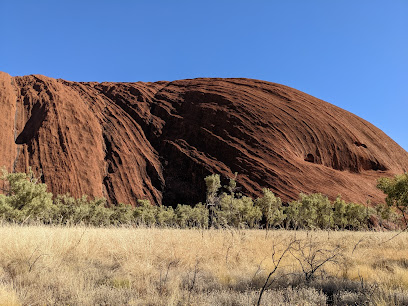
Mala Walk Car Park
1.6 km
Explore the stunning landscapes and rich culture of Uluru-Kata Tjuta National Park from the Mala Walk Car Park, your gateway to adventure in the Red Centre.
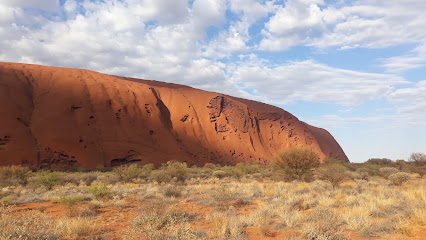
Maruku Arts Gallery
2.6 km
Explore the vibrant world of Aboriginal art at Maruku Arts Gallery, where cultural heritage and stunning creativity come together in Uluru-Kata Tjuta National Park.
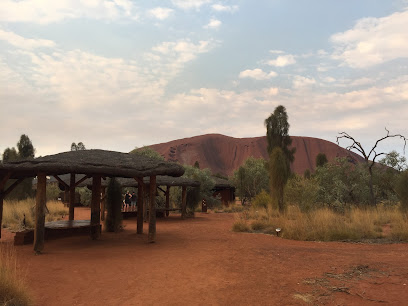
Uluru- Kata Tjuta National Park Entry Station
9.8 km
Discover the wonders of Uluru-Kata Tjuta National Park through its entry station, your gateway to sacred landscapes and rich Aboriginal culture.
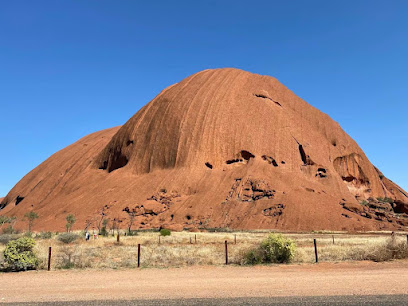
Longitude 131
10.9 km
Discover unparalleled luxury and breathtaking views of Uluru at Longitude 131, a premier lodge in the heart of Australia's breathtaking Red Centre.

Uluru Camel Tours
11.0 km
Discover the beauty of the Australian Outback with Uluru Camel Tours, offering unique camel rides and unforgettable experiences near Uluru.
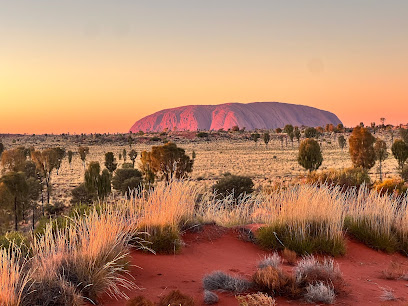
ANZAC Memorial
11.6 km
Explore the ANZAC Memorial in Yulara, a historical landmark honoring the bravery of ANZAC soldiers amidst the breathtaking landscapes of Australia's Outback.
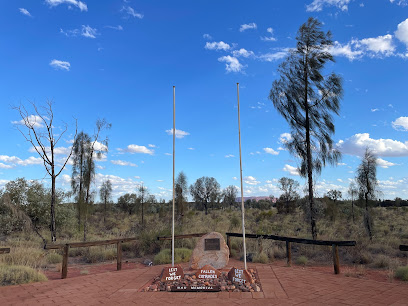
Uluru Segway Tours
16.7 km
Experience the breathtaking landscapes of Uluru on a thrilling Segway tour, blending adventure with cultural discovery in Australia’s Red Centre.
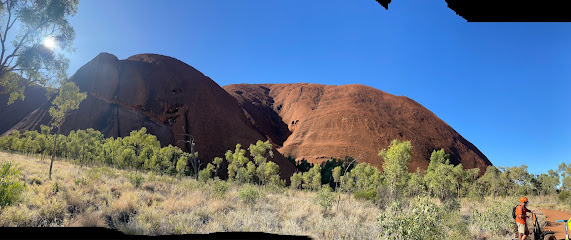
Kata Tjuta Viewing Area Carpark
25.1 km
Discover the breathtaking views and unique landscapes of Kata Tjuta at the Viewing Area Carpark, an essential stop for every tourist in the Northern Territory.
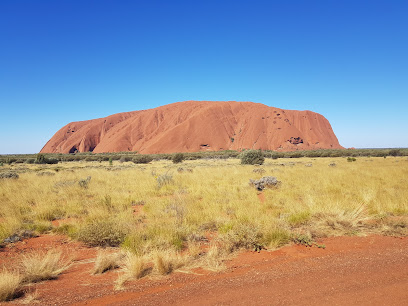
Unmissable attractions to see
Uluṟu-Kata Tjuṯa National Park
0.2 km
Experience the natural wonder and cultural heritage of Uluṟu-Kata Tjuṯa National Park in Australia's stunning outback, a must-visit destination for every traveler.
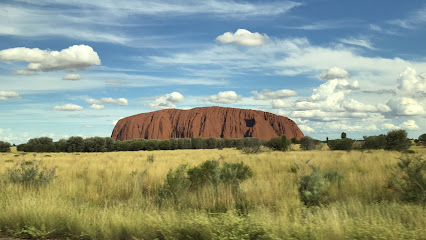
Muṯitjulu Waterhole
0.9 km
Experience the serene beauty and cultural significance of Muḏjitjulu Waterhole, a tranquil oasis in the Northern Territory's stunning landscape.
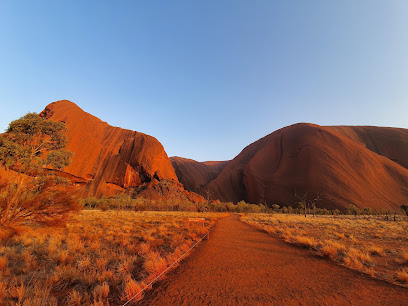
Kantju Gorge
0.9 km
Experience the breathtaking beauty and cultural significance of Kantju Gorge, a stunning nature preserve in Australia's Northern Territory.
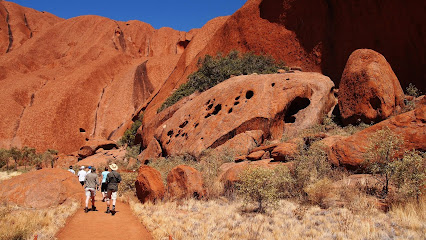
Kuniya Walk
0.9 km
Explore the breathtaking Kuniya Walk at Uluru, where nature's beauty meets rich cultural heritage in a serene desert landscape.
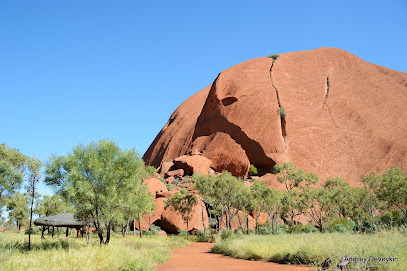
Caves at Uluṟu
1.2 km
Discover the enchanting Caves at Uluṟu, where ancient rock art meets stunning geological formations in the heart of Australia’s Northern Territory.
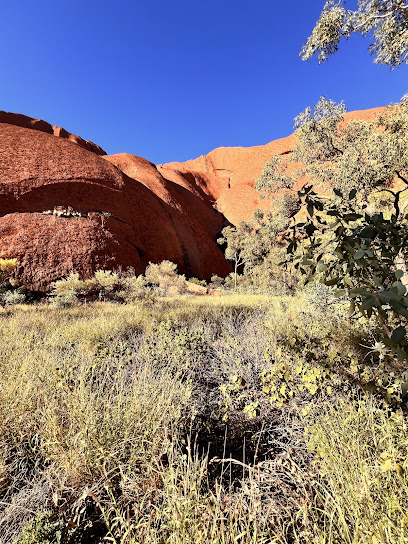
Lungkata Walk
1.3 km
Explore the Lungkata Walk in the Northern Territory, where breathtaking landscapes meet rich Indigenous culture in a serene hiking experience.
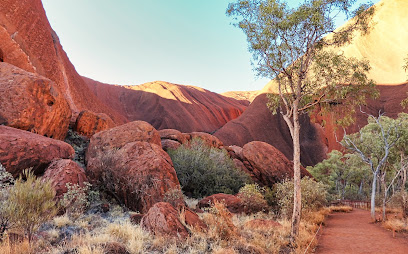
Uluru - Ayers Rock Base Walk
1.5 km
Discover the breathtaking landscapes and rich Aboriginal heritage on the iconic Uluru - Ayers Rock Base Walk, a must-experience for all travelers in Australia.
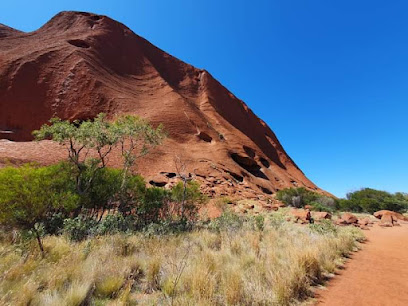
Liru Track
2.1 km
Discover the breathtaking Liru Track in Northern Territory, a stunning hiking trail that showcases Australia's rich biodiversity and cultural heritage.
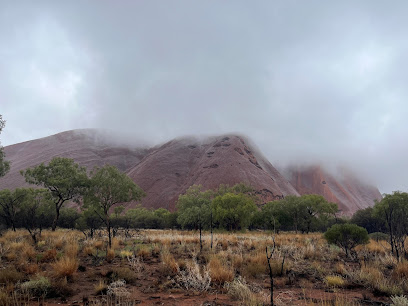
Walkatjara Art
2.6 km
Explore Walkatjara Art in Northern Territory for a profound insight into Indigenous culture through captivating artworks and engaging experiences.
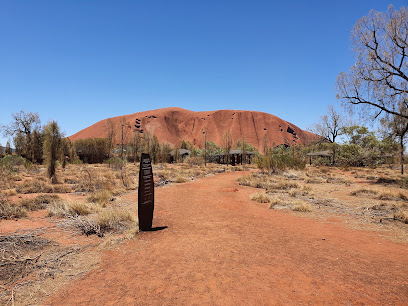
Uluṟu-Kata Tjuṯa Cultural Centre
2.6 km
Explore the rich Indigenous heritage at Uluṟu-Kata Tjuṯa Cultural Centre, where culture, tradition, and stunning landscapes unite.
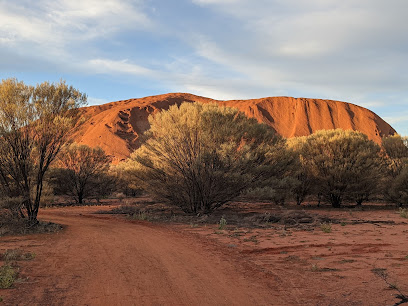
Outback Cycling Uluru
2.7 km
Explore the iconic landscapes of Uluru on two wheels with Outback Cycling – a unique adventure in Australia's breathtaking Outback.
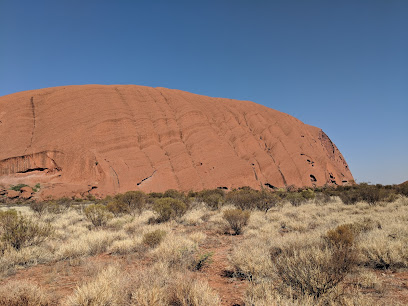
Uluṟu Sunset Viewing Area
3.3 km
Experience the breathtaking beauty of Uluṟu at the Sunset Viewing Area, where the iconic rock transforms under the magical hues of the setting sun.
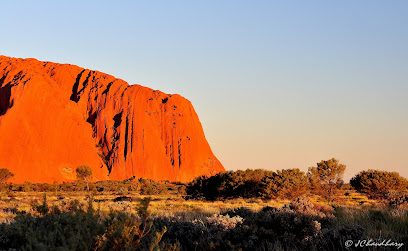
Talinguṟu Nyakunytjaku - Uluṟu Sunrise Viewing Area
3.8 km
Experience the enchanting sunrise at Talinguṟu Nyakunytjaku, where Uluru transforms with the dawn light in a breathtaking natural spectacle.
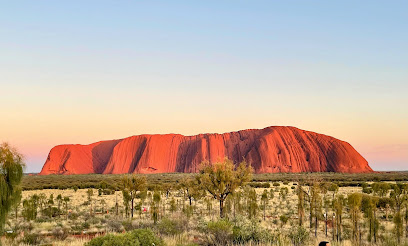
Talinguṟu Nyakunytjaku
3.8 km
Discover the breathtaking landscapes and rich cultural heritage of Talingüfu Nyakunytjaku in Australia's Northern Territory.
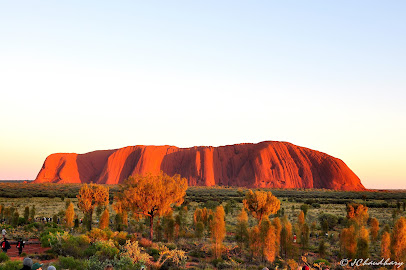
Uluṟu Coach Sunset Viewing Area
4.4 km
Witness the iconic sunsets over Uluṟu at the breathtaking Uluṟu Coach Sunset Viewing Area, a must-see attraction in Australia's Northern Territory.
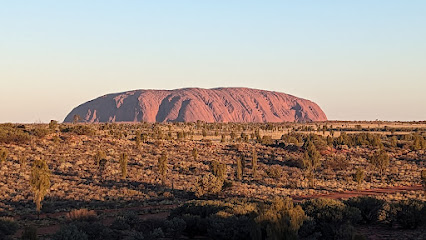
Essential places to dine
Pioneer BBQ & Bar
12.2 km
Experience authentic Australian BBQ in Yulara's vibrant Pioneer BBQ & Bar, surrounded by stunning desert landscapes.

Bough House Restaurant
12.2 km
Discover Bough House Restaurant: A buffet paradise offering local flavors amidst breathtaking Australian outback scenery.

Outback Hotel & Lodge
12.2 km
Discover authentic outback hospitality at Outback Hotel & Lodge near Uluru – perfect for adventure seekers and cultural enthusiasts alike.

Outback Kiosk
12.2 km
Experience authentic Australian cuisine at Outback Kiosk in Yulara – where local flavors meet warm hospitality in stunning outback surroundings.

Arnguli Grill & Restaurant
12.4 km
Discover Arnguli Grill & Restaurant: A delightful fusion of local flavors and stunning views in Yulara's vibrant dining scene.

Desert Gardens Hotel - Ayers Rock Resort
12.4 km
Experience luxury amidst nature at Desert Gardens Hotel in Ayers Rock Resort - your gateway to Australia's iconic landscapes.

Mangata Bistro & Bar
12.4 km
Experience authentic Northern Territory cuisine at Mangata Bistro & Bar in Yulara – where local flavors meet vibrant atmosphere.

Ayers Wok
12.7 km
Discover flavorful Asian cuisine at Ayers Wok, Yulara - your go-to spot for delicious noodle dishes amidst Australia's breathtaking landscapes.
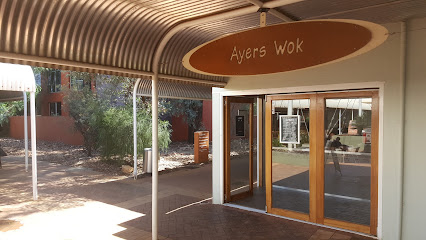
The Lost Camel Hotel - Ayers Rock Resort
12.7 km
Experience contemporary comfort and cultural richness at The Lost Camel Hotel in Ayers Rock Resort – your gateway to Australia's natural wonders.

Walpa Lobby Bar
12.9 km
Discover Walpa Lobby Bar - your oasis in Yulara for refreshing drinks and delicious Australian cuisine amidst stunning natural beauty.

Ilkari Restaurant
12.9 km
Experience the rich flavors of Australia at Ilkari Restaurant in Yulara—where culinary excellence meets stunning Outback views.

Pira Pool Bar
12.9 km
Discover relaxation at Pira Pool Bar, where refreshing drinks meet breathtaking views in Australia's outback paradise.

Sounds of Silence
13.0 km
Experience an exquisite culinary journey at Sounds of Silence, where gourmet dining meets breathtaking views in the heart of Australia's Outback.
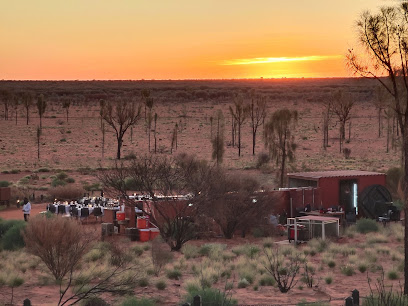
Markets, malls and hidden boutiques
Ininti Cafe & Souvenirs
2.6 km
Discover the flavors and artistry of the Northern Territory at Ininti Cafe & Souvenirs, a cultural gem for every traveler.
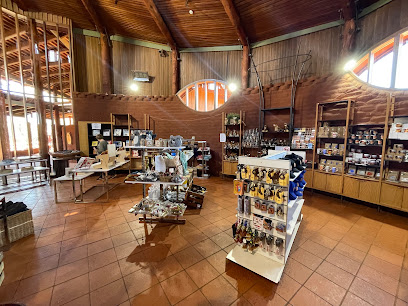
Uluru-Kata Tjuta Information Centre
2.7 km
Explore the rich cultural heritage and breathtaking landscapes at the Uluru-Kata Tjuta Information Centre, the gateway to the heart of the Australian Outback.

Gallery of Central Australia
12.4 km
Discover the vibrant art scene at the Gallery of Central Australia, where Indigenous culture and breathtaking landscapes come alive through stunning artworks.

Maruku Arts Market Place
12.6 km
Explore Maruku Arts Market Place in Yulara for a unique glimpse into Aboriginal art and culture, and support local artisans with every purchase.

Maruku Arts - Dot Painting Workshop
12.6 km
Experience the beauty of Indigenous art through hands-on dot painting workshops at Maruku Arts, near Uluru, Northern Territory.
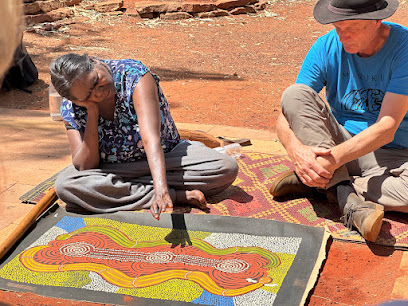
Ayer’s Rock Town Centre
12.6 km
Explore Ayer's Rock Town Centre: A vibrant hub for shopping, dining, and cultural experiences in the heart of Uluru.

Shirt Shop
12.6 km
Explore The Shirt Shop in Yulara for unique souvenirs that capture the spirit of Northern Territory, perfect for any traveler seeking a memorable keepsake.

TAB
12.6 km
Join the excitement at TAB in Yulara, where sports enthusiasts gather for off-track betting amidst the stunning landscapes of Australia's Northern Territory.
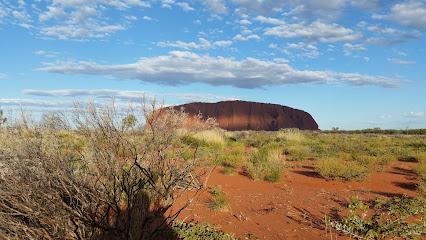
Oz Collections
12.6 km
Explore Oz Collections in Yulara for unique Australian souvenirs, Aboriginal art, and local crafts that celebrate the spirit of Australia.

Ayers Rock Designs
12.6 km
Explore Ayers Rock Designs for unique Australian souvenirs and fashion accessories that capture the beauty of the Northern Territory.

Kulata Academy Cafe
12.6 km
Discover the flavors of the Northern Territory at Kulata Academy Cafe, your perfect breakfast and coffee stop in Yulara.

The Uluru Shop
12.6 km
Explore The Uluru Shop for unique souvenirs and authentic gifts celebrating the beauty and culture of Australia's iconic Uluru.

Voyages Ayers Rock Resort IGA
12.7 km
Discover the convenience of Voyages Ayers Rock Resort IGA, your one-stop supermarket for exploring the beauty of the Red Centre.

Geckos Cafe
12.7 km
Experience the flavors of the Australian Outback at Geckos Cafe in Yulara, where local ingredients meet vibrant dishes in a welcoming atmosphere.

Ayers Rock Automotive
14.8 km
Discover exceptional automotive services at Ayers Rock Automotive, your trusted mechanic in Yulara, Northern Territory.




